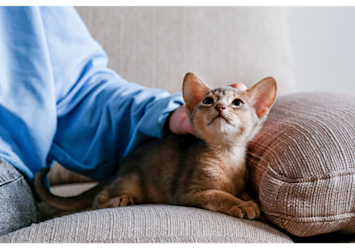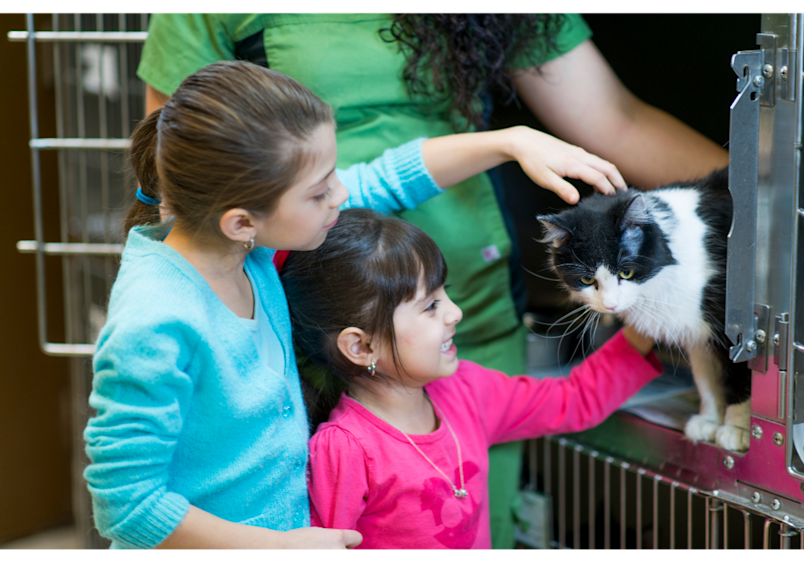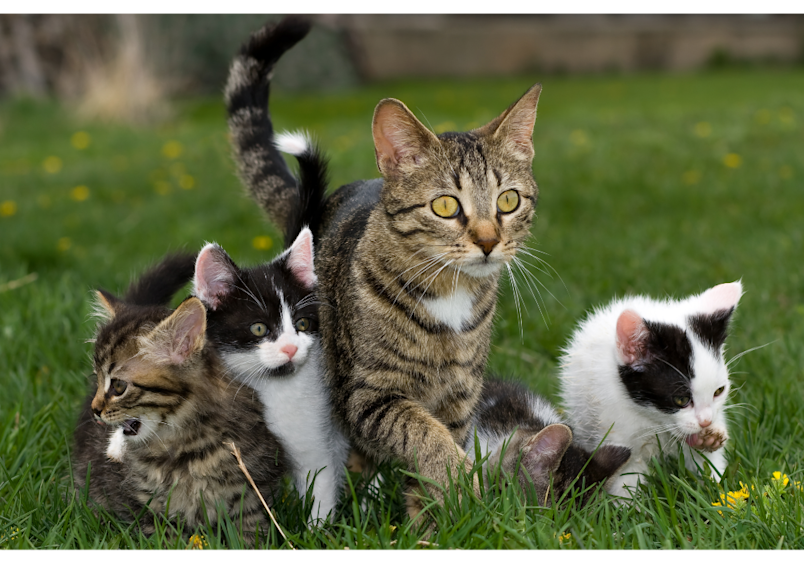
Welcoming a cat into your home is like signing a 15-year lease with a very demanding (but adorable) roommate. The monthly rent isn't a fixed number; it fluctuates based on their appetite, health, and a seemingly endless need for new toys and treats. Before you commit to this long-term arrangement, you need to understand the full financial responsibility.
Whether you want to adopt a cat from a shelter or plan on purchasing one from a breeder, making sure you’re financially ready for the responsibility of pet ownership is a must. If you’re not able to afford food and medical care for your furry friend, you’ll need to rethink getting a pet until you’re ready to do so.
How much does it cost to own a cat, exactly? We’ll give you a thorough breakdown of how much you can expect to pay throughout your cat’s life, from the typical upfront cost to the more unexpected bills, we’ll cover the ins and outs of owning a cat and how pet parenting affects your wallet.
Consider Initial Cat Ownership Costs
The very first cost a pet parent incurs is associated with the facility where the cat is purchased. If you adopt from a shelter or cat rescue, you’ll need to pay their required fees. The exact cost varies but can be as little as $50 or as much as $200 or more. Why do shelters and rescues charge so much when there are so many animals in need of homes? In short, these facilities are usually donation based and need to cover the costs of the cats’ initial veterinarian exam, vaccinations, and other necessities while living there.
It’s not surprise that a person who buys a cat from a breeder will likely pay much more for their pet. Breeders can charge whatever they want, and purebred felines can go for thousands of dollars. Average cat prices vary depending on where you live, but some breeds, such as the Sphynx, can be as much as $5,000 while a Cornish Rex typically goes for less, around $1,200.
Regardless of where your cat comes from, you’ll need to prepare for a second set of initial expenses: home supplies. For example, you’ll need to buy your kitty a comfortable bed that will be big enough for them once they’re fully grown. You’ll also need to buy additional supplies like a cat tree or special cat shelves so your pet has a place they can safely retreat. You’ll also need to purchase bowls for water and food. Don’t forget that your shopping list should also include a litterbox for them to use. A cat carrier is another necessity, as you’ll need one to occasionally transport your pet to and from your home, such as when you’re visiting the vet.
How much all of this basic setup costs depends on your budget. On the lower end of the scale, you may be able to purchase these items for a hundred or so dollars. Of course, if you have a more flexible budget, you can spend even more on luxury versions of these items. In this case, the sky’s the limit.

Plan for Average Monthly Cat Expenses
There’s another round of costs involved in pet care, and these are the ones that perhaps cost the most over time. Monthly expenses for food, litter, and grooming can add up significantly over the years. To determine the average cost of owning a cat per month, you’ll need to do a bit of math.
First, consider how much your cat will eat. A typical cat that weighs about 10 pounds will eat two three-ounce cans of wet food each day. Estimating that one food can usually costs a dollar or two, owners can expect to pay between $60 and $120 each month to feed their feline a diet of wet food. A bag of dry cat food can last a month or longer, with costs typically ranging from $10 to $40 per month depending on the brand and quality. Specialty food will cost more.
Litter is the next monthly consideration as it will need to be replenished over time. How much litter your cat will go through every 30 days depends on several factors, including whether you purchase clumping or non-clumping litter and how big your cat is. A good rule is to use a minimum of 30 pounds of litter each month per cat, which usually costs around $20 for a mid-tier brand.
The third monthly cost of a cat you should consider is grooming. While many owners choose to brush their cat themselves, they may need to enlist the help of a professional if the cat’s fur tends to mat. Owners may also find they are unable to trim a cat’s claws themselves, especially if their feline is particularly frisky. Paying a professional groomer to handle these tasks can cost a hundred dollars or more every few weeks.
Estimate Annual Cat Care Costs
While you (hopefully) won’t need to take your cat to the vet each month, you will certainly need to take them at least once a year. How much does a cat cost per year in medical fees? As with human healthcare costs, the amount can differ wildly between individuals.
If your cat is relatively healthy, they will likely only need an annual check-up throughout most of its adult life. Even in this case, you’ll need to be prepared to cover the cost of routine blood tests, vaccinations, flea and tick prevention, and the occasional antibiotic if they contract a minor illness. These costs can total a couple hundred dollars each year.
Felines that experience complex or chronic health issues will need additional medical care. For example, some cats have hyperthyroidism, a condition which is typically managed with daily medication. Others may be prone to dental issues or skin infections, as is the case with hairless breeds. You may need to purchase creams or medications for these problems in addition to scheduling more frequent vet visits.
As you might imagine, the cost of routine vet care depends on where you live. To get the most out of your money, don’t hesitate to call multiple local vet clinics to request quotes for certain procedures. Compare costs and check reviews to determine which location will serve your and your cat’s needs best.
How Your Cat’s Age Can Affect Costs
Keep in mind that your cat’s age can be a significant factor in determining care costs over time. Senior cats are known for being more expensive than younger cats. As with humans, a cat’s health declines with age, which is why older pets may cost more. For instance, senior cats are much more likely to develop arthritis, a condition that can be treated with pain medications. It’s also recommended for senior cats to visit the vet twice a year rather than just once. This way, vets can pick up on any concerns as early as possible.
Similarly, taking care of a kitten is much different from taking care of an adult cat. Kittens need special food designed to meet their nutritional needs. At this stage of life, kittens will also need many vaccinations to protect their fragile immune systems. Additionally, younger cats are typically much more playful than older cats. You may need to spend extra money on toys to keep them occupied, or, in the worst cases, to replace furniture and other items that your mischievous kitten has destroyed while testing out their claws!

Hidden and Unexpected Costs of Owning a Cat
Unfortunately, there’s simply no way to determine exactly how much your cat will cost, even if you carefully budget for food and check-up expenses. That’s because life is full of surprises, some of them not-so-good.
It’s impossible to predict when a medical emergency will happen. Your cat may decide to ingest a piece of ribbon one day, resulting in an emergency trip to the animal hospital. Or there’s the possibility that you realize that your cat is an expert escape artist. That cat carrier and baby gate you purchased are no match for them, and you need to spend extra money replacing them with more secure options.
Money-Saving Strategies for Cat Owners
You’ve probably already realized that the cost of living just keeps going up. This doesn’t necessarily mean you can’t bring a feline into your family. It just means you might need to get creative with your budget. Try out a few brands of litter to see whether cheaper options work for you and your cat. Also, consider buying in bulk when cat food is on sale. Canned food stays good for a long time, so stocking up could work in your favor.
While it’s tempting to spend your paycheck on new toys to keep your kitty entertained, remember that cats at notoriously good at finding amusement in everyday objects! That cardboard box your online purchase shipped in may bring them even more joy than an expensive plastic novelty item. You might also consider growing your own catnip from seeds. It’s incredibly affordable and simple to grow, not to mention the fact it gives your cats a constant supply of their favorite smell!
Additionally, note that many pet owners find that pet insurance cuts down on medical costs significantly. The importance of cat health insurance can’t be stressed enough, particularly for cats who end up having lots of medical problems down the road. However, be aware that most policies don’t cover typical vet visits, which is why a cat wellness plan also matters for your finances. With a wellness plan, you can put aside money ahead of time to use for those costs that aren’t covered by insurance.
Owning a Cat Isn’t Just About the Cost
How much does it cost to take care of a cat? Probably more than you think. But as we've seen, that demanding (but adorable) roommate's "rent" is something you can absolutely prepare for. With careful planning for typical expenses in addition to preparing a nest egg for emergencies, you can ensure you’re in a great financial position to own a cat. Remember that cat ownership isn’t just about your budget, though. It’s just as important to ensure you have enough time and energy to bond with your furry friend. No matter how high the cost of owning a cat may be throughout the years, there’s simply nothing better than the friendship you two will form!